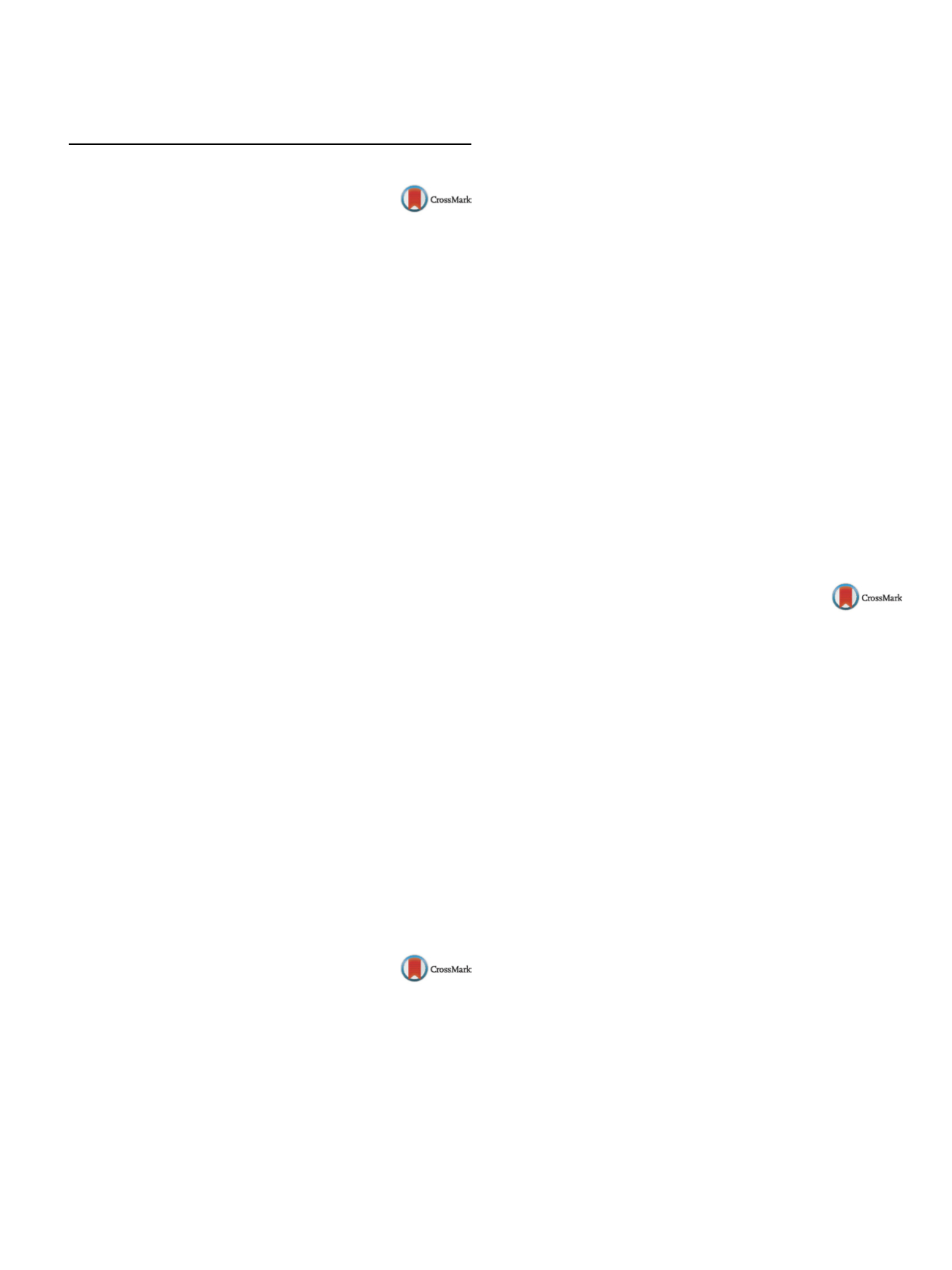

25th European Congress of Psychiatry / European Psychiatry 41S (2017) S583–S644
S595
e-Poster viewing: Genetics & molecular
neurobiology
EV0586
Adult with autism – oxidative stress,
co-morbidity and predisposition
M. Bækgaard Thorsen
1 ,∗
, N. Bilenberg
2, P. Munk-Jørgensen
1,
Å. Fex Svenningsen
3, N. Heegaard
4, T. Maria Michel
11
Institute of Clinical Research, University of Southern Denmark,
Research Unit of Psychiatry, Odense, Denmark
2
Institute of Clinical Research, University of Southern Denmark,
Research Unit of Child, and Adolescent Psychiatry, Odense, Denmark
3
Institute of Molecular Medicine, University of Southern Denmark,
Department of Neurobiology Research, Odense, Denmark
4
Institute of Clinical Research, University of Southern Denmark,
Research Unit of Clinical Biochemistry, Odense, Denmark
∗
Corresponding author.
Introduction
The etiology of autism spectrum disorder (ASD) is
unclear. Studies involving children with ASD suggest that oxidative
stress could explain some of the pathology. Few reports have inves-
tigated the role of oxidative stress into adulthood. Furthermore, the
knowledge on psychiatric and somatic co-morbidities, as well as
socio-economic status in a trajectory across lifespan is sparse.
Objectives
Investigating oxidative stress related markers in ASD,
along with trajectories in socio-economic functioning and co-
morbidities.
Aims
To evaluate the importance of oxidative stress in the neu-
robiology of adults with ASD and assess the socio-economic level
of functioning and co-morbidities.
Methods
Plasma levels of antioxidant super-oxide-dismutase
isoenzymes (SOD1 and SOD2) and pro-oxidant xanthineoxidase
(XO) were measured in 56 patients
≥
18 years of age, diagnosed
in childhood with ASD (F84.0, F84.1, F84.5 or F84.8), along with
gender and age matched controls. Participants were interviewed
regarding their health, familial predisposition and social status.
Results
Cases showed higher levels of SOD1 (268.2 ng/mL vs.
205.6 ng/mL). We found no differences regarding SOD2 and XO.
Patients had a higher BMI (27 vs. 24), fewer drank alcohol (40% vs.
75%), more had a psychiatric co-morbidity (50% vs. 2%), more had
family member with a psychiatric diagnosis (80% vs. 50%). None of
the bio-psycho-social factors showed association with biomarker
levels.
Conclusion
Oxidative stress seems to play a role in ASD. Fur-
thermore, patients with ASD often have psychiatric co-morbidities;
more often have a family history of psychiatric diagnoses, and are
less healthy physically.
Disclosure of interest
The authors have not supplied their decla-
ration of competing interest.
http://dx.doi.org/10.1016/j.eurpsy.2017.01.916EV0587
Evaluation of serum microRNA
expression profile in panic disorder
patients
F.P. C¸ ökmüs¸
1 ,∗
, E. Özmen
1, T. Alkın
2, M.B. Batır
3, F.S. C¸ am
31
Celal Bayar University School of Medicine, Psychiatry, Manisa,
Turkey
2
Dokuz Eylül University School of Medicine, Psychiatry, Izmir, Turkey
3
Celal Bayar University School of Medicine, Medical Genetic, Manisa,
Turkey
∗
Corresponding author.
Introduction
Even though it has begun to be investigated in
recent years, studies of microRNA (miRNA) in anxiety disorders are
limited. Our research is the first miRNA expression study in panic
disorder, which excludes of drug use and additional psychiatric
disorders.
Objective
We aimed to determine the availability of miRNAs as
biomarkers in the serum levels of panic disorder and to demon-
strate the changing expression of miRNAs.
Methods
In the research, 35 panic disorder patients and 35
healthy controls were administered a socio-demographic and clin-
ical information form, SCID-I, PDSS. 2 tubes of peripheral venous
blood were taken from each group for genetic evaluation. miRNA
expression analysis was performed in those samples by the RT-PCR
method.
Results
Compared with the healthy control group, 8 miRNA
expression levels were found different in panic disorder group. Five
of them were up-regulated and 3 of them were down-regulated.
There was no correlation between the level of miRNA expression
and PDSS total score and PDSS sub-items. miR-1297 and miR-4465
expression levels were statistically significant between the two
groups. Both miRNAs are also known to arrange the gene regions
that affect GABA
A
receptor subtypes.
Conclusions
miR-1297 and miR-4465 regulate the GABAA gene
that is thought to play a role in the etiology of panic disorder (Wong
et al., 2014, Wang 2016). In panic disorder group, miR-1297 and
miR-4465 expression levels were found to be up-regulated from
the healthy control group.
Keywords
Panic disorder; miR-1297; miR-4465; GABA
Disclosure of interest
The authors have not supplied their decla-
ration of competing interest.
http://dx.doi.org/10.1016/j.eurpsy.2017.01.917EV0588
SHANK3 mutation in consanguineous
schizophrenia family in northwest
Algeria
A. Dahdouh
1 ,∗
, J. Prados
2 , M.Guipponi
2 , F. Bena
2 , W.Adouan
2 ,S. Antonarakis
21
University of Oran, department of psychiatry, Oran, Algeria
2
University of Geneva, department of medical genetics, Geneva,
Switzerland
∗
Corresponding author.
Introduction
Several studies have asserted the existence of a
strong and complex genetic component in the determination of
psychotic disorders. GWAS studies conducted over the past decade
lead to the identification of only a few low effect associations, call-
ing questioning the hypothesis of “common disease – common
variants” for a model involving a large number of rare variants.
Aims
Here, we studied amultigenerational multiplex familywith
schizophrenia a high rate of consanguinity, located in the north-
west of Algeria. This study aims to identify inherited rare variants
of schizophrenia using new genetic technologies.
Methods
This family has received complete clinical (DIGS, DSM-
IV criteria), genealogical investigations, CNV analysis using CGH
Microarray Kit 244 K (Santa Clara, CA) and WES (by GAIIx Illu-
mina/HiSeq 2000) focused in CNV regions, that were performed
in the department of genetics in the university hospital of Geneva.
Results
We identify 11 affected members by psychotic disorders.
The main CNVs analysis results found in a schizophrenic member a
Del 22q13.33 affecting SHANK3 gene. WES regarding these regions
identified a mutation at position 511178000 in SHANK3 gene in all
the selected affected relatives.
Discussion
Several studies have asserted the association of
SHANK3 mutations with schizophrenia and autism disorders. This
is the first observation of rs511,178,000 in schizophrenia pheno-
type.
Conclusion
In total, this highly informative family have identi-
fied new rare genetic variant of schizophrenia. The search for this
mutation inwider control population inwould be useful to validate
these data.


















